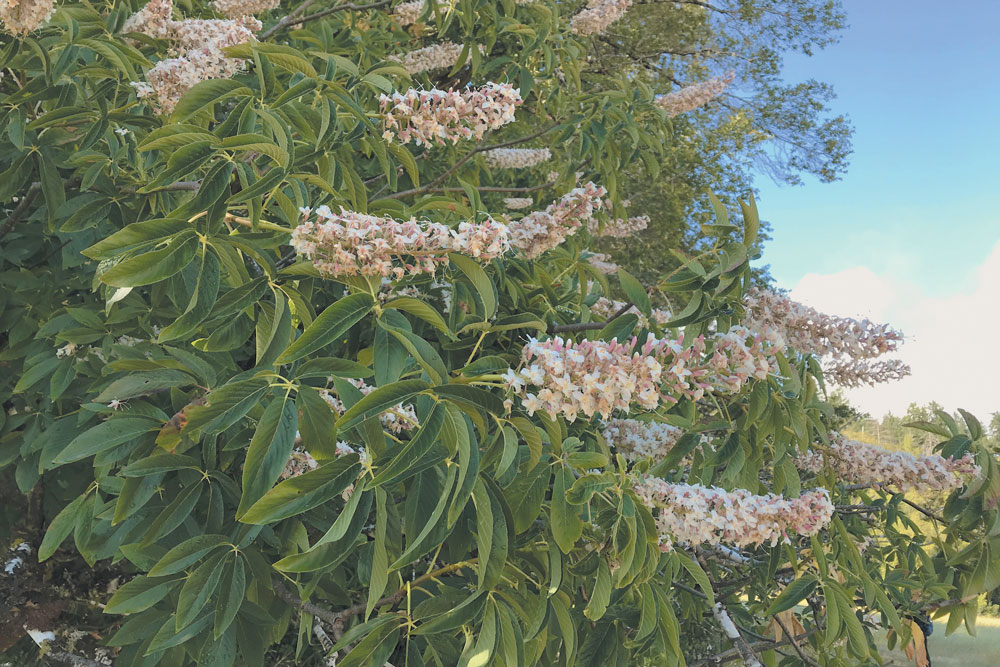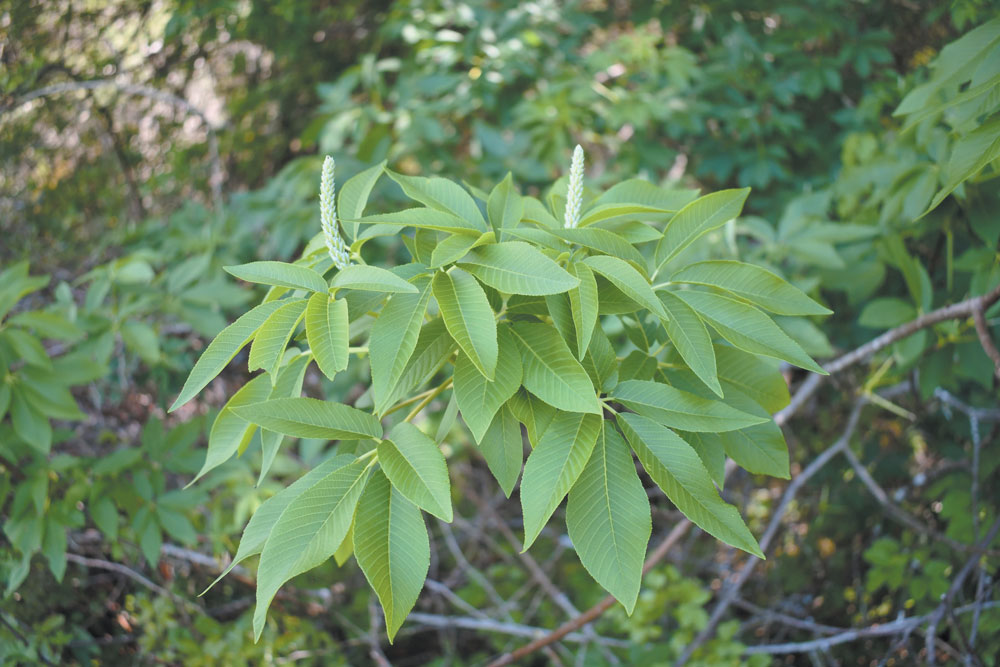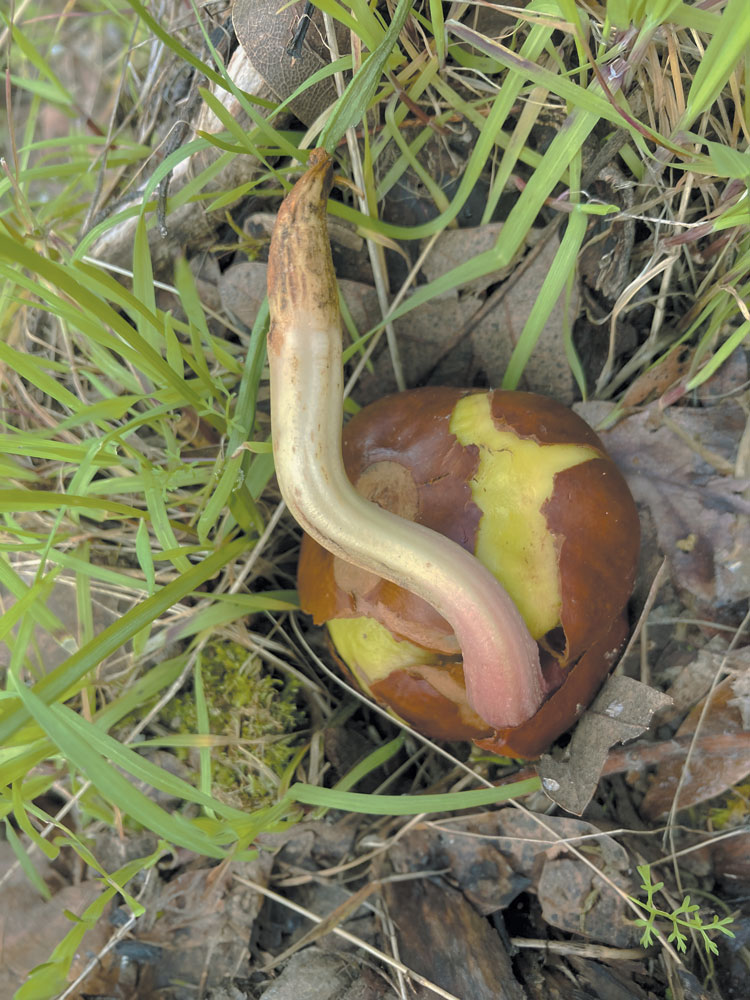Plant Notes
California Buckeye

Aesculus californica
One of the first native plants to leaf out each year is California buckeye. Buckeyes don’t even wait for spring, leafing out in mid-winter, when moisture from rains is abundant. In California’s dry summer climate, many native plants have adapted to grow during the wet season and go dormant in the dry season; buckeye is a good example of this. By the first heat wave of summer, buckeyes’ leaves begin to turn brown and wither, reducing the tree’s need for water.
Buckeye leaves are up to seven inches around and are composed of five to seven leaflets arranged palmately (roughly like the shape of your hand). In spring, showy panicles of white to pale pink flowers appear. The fruit is borne at the tip of the flower panicle; and when the husk comes off, the nut inside is hard, brown, and shiny, about two inches in diameter. Nuts fall off the tree in early fall, and with the rains, they sprout a long taproot that finds its way into the earth. A stem then arises that leafs out with a crown of deep green leaves, and a new tree is born.

Native bees that evolved with buckeye are attracted to the flowers, which are toxic to European honeybees (they are not resistant). Hummingbirds and butterflies also visit the flowers for nectar. All parts of the plant are toxic, but for many of California’s tribes, buckeye has a variety of uses when properly processed. According to historian, storyteller, and respected friend of the Wailaki, Ben Schill, “Buckeyes…were peeled and mashed with a stone then washed over and over again until the bitterness was gone. Once rinsed, I believe they were roasted in patties, like acorn bread.” Buckeye soup was also made from the seeds. Ben further notes, “The great importance of buckeye is that it was [said] to have fire in it. The wood was used to make fire by friction.”

Generally growing on slopes along canyons and streamsides, buckeyes seek the forest edge or the dappled shade of oak woodlands. Occasionally, they grow on the valley floor. It is here that they reach heights up to 40 feet. More commonly, buckeyes are small trees or large shrubs, growing from 10 to 20 feet tall. They are endemic to California, ranging from the foothills and valleys of the Coast Ranges to the Central Valley, the western slopes of the Sierra Nevada, and as far south as Irvine. Buckeye is in the Sapindaceae Family, along with horse-chestnut, lychee, and golden rain tree.
You can find more stories about the Native American People of Northern California at benschill.com

